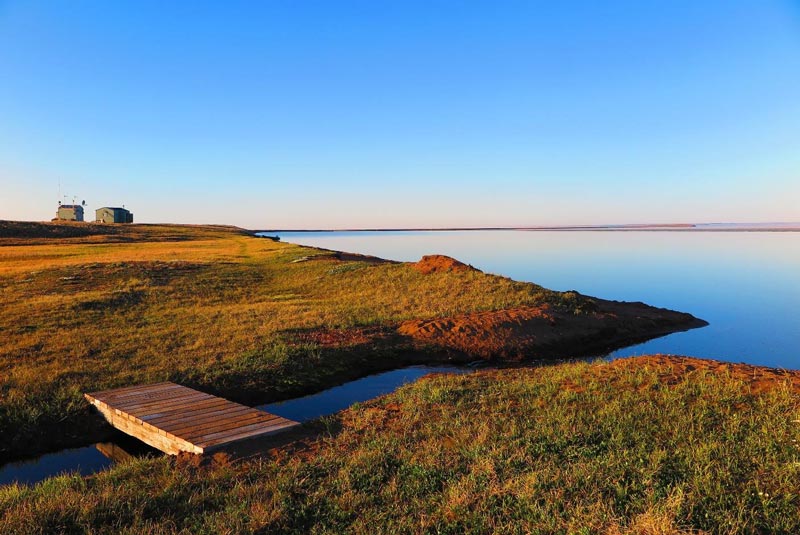
During this week’s WERC seminar, Benjamin Jones – a new research faculty at UAF, will discuss development of the Teshekpuk Lake Observatory (TLO) in Arctic Alaska. The Teshekpuk Lake research station was initially established in 1963 as a remote outpost for the Arctic Research Laboratory based in Utqiaġvik (formerly Barrow). Limited research was conducted at the station up until it was abandoned in the early 1980s with the closing of the then Naval Arctic Research Laboratory (NARL). Following nearly three decades of neglect, Jones and his colleagues began to refurbish and clean up the abandoned research station in 2007. Since then, the TLO has provided an operational base for several national and international funded research projects. Jones will provide an overview of the TLO efforts to date and its research infrastructure as well as present findings based on data collected from sensor networks, remotely sensed imagery, paleoecological analyses, and limnological surveys over the last decade.
Teshekpuk Lake is the largest arctic lake in Alaska and the third largest lake in the state. It has a surface area of 850 km2, a watershed area of 2,750 km2, and a maximum depth of 7 m. It is located in the continuous permafrost zone, 15 km from the Arctic Ocean, and is roughly 2 m asl. Teshekpuk Lake is the ideal location for establishing an arctic observatory - given sea-level rise projections, rapid erosion along the Beaufort Sea coast and Teshekpuk Lake shore, ice-rich permafrost thaw and land subsidence, climate change impacts to aquatic and terrestrial ecosystems, as well as the potential for oil and gas development in the watershed and region. Teshekpuk Lake also provides an ideal calibration and validation site for remote sensing missions due to its size and location.
Unable to attend in person? Join remotely from your PC, Mac, Linux, iOS or Android
Or dial : +1 669 900 6833 or +1 646 558 8656
Meeting ID: 649 476 514
iPhone one-tap : +16699006833,,649476514# or +16465588656,,649476514#